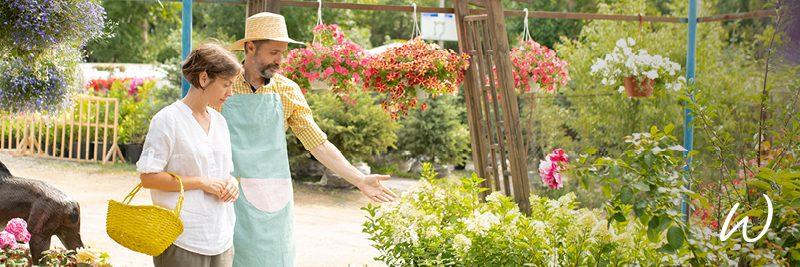5 things we can learn from gardening when planning our retirement
The RHS Chelsea Flower Show 2023 is in full bloom. And, if you’re enjoying the television coverage – or, indeed, putting your own green fingers to the test at home – it might surprise you to learn that there are numerous parallels between gardening and investing for the long term.

‘Lockdown trends’ might seem like a distant memory, but some newfound hobbies have endured. Gardening was a popular candidate, as we turned to nature as escapism.
RHS Chelsea is the highlight of summer for green-fingered fans, who will also be busy getting stuck into their outdoor spaces this spring. But did you know that gardening activities offer a number of lessons for long-term financial planning?
Here are our top five tips to help both gardeners and investors to grow!
- Plot the path
Like gardening, successful investing starts with understanding what you want, when you want it and how to get there. Sharon Bonfield, Propositions Manager at St. James’s Place Wealth Management, points out:
“If you’d like radishes in your salad all year round, you have to keep planting them every few weeks. Similarly, when you’re saving for a rainy day, you need to keep replenishing your pot if you dip into it.”
But you’d need to take a different approach if you wanted an asparagus crop, she adds:
“It takes months for the seeds to germinate and three or four years to get the asparagus spears. You have to look after it all that time without getting anything back, but when it starts producing, it can do so for decades.”
What’s more, if you want to plant something that will produce results in a matter of weeks, you’ll need to identify the appropriate options.
- Avoid the shade
We all know there’s no point trying to cultivate a sun-loving plant in the shade! Similarly, if you want your money to grow over the long term, it needs to be in an environment that provides the potential to produce the returns that you want. For example, a retirement fund that depends entirely on cash is highly unlikely to provide the pension pot you want later in life.
Both gardens and retirement plans need attention over time. You might get away with putting something in and then leaving it for a few years; however, it’s not a good idea, nor is it a recipe for peace of mind. Bonfield adds:
“You can spend hours with these plants because you’re planning, looking after them and working out what they need. It’s like putting your money away and hoping it’ll grow. It’s important that it’s in the right place, and if it’s not working, you might need to adapt as you go along.”
But when you’re keeping an eye on it and making sure it’s growing as you’d expect, you can rest easy knowing that you’re on course to reap the rewards eventually.
- Plan for a rainy day
Both gardens and investments will invariably be affected over time by the unpredictability of conditions, which can often leave damage in their wake.
But gardeners know this is all part of the experience, and they may have to adapt and make changes over time. This is also the case when it comes to long-term investing, as Bonfield points out:
“It can be useful for investors to think about what happens when gardens are affected by bad conditions and weather. You’re not going to dig it all up and start again; instead, you’ll manage it, make changes and stay patient.”
While the short-term impact of a downturn can be uncomfortable, simply giving up could be very costly. In contrast, staying the course and making any necessary alterations gives you a chance to benefit from any eventual improvement in conditions.
- Listen to the experts
If gardening isn’t your area of expertise, it’s prudent to ask for advice. Bonfield says:
“You wouldn’t build a vegetable patch without knowing what kind of soil you require, what you should plant and how you should manage it. Unless you’ve done it before, you’ll go online, read about it and get advice.”
Again, there are parallels with financial planning – it can be beneficial to have a seasoned expert keeping an eye on your retirement pot and making sure it’s growing as you’d expect. Bonfield concludes:
“You wouldn’t throw something in the garden and hope for the best, so why would you do that with your savings and investments? You want to know that your money is working hard and that it’s likely to get the results you want. So if you take advice from specialists, you’re more likely to achieve success.”
To summarise, it’s clear that there are many ways in which the lessons of gardening can stand us in good stead when it comes to saving for retirement. It’s crucial to be patient and have a sense of the long-term outlook – and an experienced financial adviser can help keep you on course.
While the benefits of gardening endeavours are not always immediately obvious, all keen horticulturists know that the fruits of their labour will usually be rewarded in the long run.
The same goes for our finances – when we have an idea of how we want things to be in the future, surely it pays to put in the groundwork now?
We can help. Contact us today: 01444 847825.
The value of an investment with St. James’s Place will be directly linked to the performance of the funds selected and may fall as well as rise. You may get back less than the amount invested.
SJP Approved 05/05/2023
